Author: Paolo@Victory Securities Partner, Andy@VDX Senior Researcher
TL;DR
Market Space: The stablecoin market relies on two core demand scenarios: trading and payments, with potential for growth by several multiples in the future. Stablecoins are the first in the crypto space to be incorporated into compliance and regulation, with compliance, institutionalization, and mainstream adoption being long-term trends. In the future, the number of stablecoin users may even surpass that of BTC holders, becoming the largest Killer App in crypto.
Circle's Advantages and Barriers: 1) Compliance first-mover advantage and legitimacy: Benefiting from compliance dividends, it is expected to serve as the "institutional stablecoin" supporting the on-chain dollar expansion strategy; 2) Open infrastructure and ecological network: USDC supports multiple chains, cross-chain protocols, and is deeply integrated with various exchanges and DeFi, collaborating with payment institutions to become the hub for cross-border payments and on-chain settlements; 3) Institutional-level trust and mainstream capital access: Asset security and transparency, regular audit reports, and currently the only product widely accepted as an "institutional-grade stablecoin."
Circle's Risks and Challenges: 1) Revenue structure highly dependent on U.S. Treasury yields, sensitive to interest rates and cyclical, with income growth under pressure during U.S. dollar rate cuts; 2) High channel dependency, with about 60% of current revenue shared with channels like Coinbase and Binance. Whether it can expand other revenue sources (such as trading commissions) and enhance channel bargaining power is key to its growth.
Competitive Comparison: The competition between USDT and USDC is essentially a contest between black and white dollars in different markets and scenarios. Tether is a "money printer," while Circle is a "narrow bank." USDT relies on exchange liquidity, OTC trading, and gray payments, while USDC focuses on compliant cross-border payments, corporate settlements, DeFi, and RWA asset-backed currency. The two form a parallel symbiotic relationship in different scenarios.
Investment Analysis: As the first compliant stablecoin leader to go public after the stablecoin legislation, Circle's IPO benefits from high market sentiment. However, compared to its projected 2024 revenue of $1.7 billion and net profit of $160 million, the current market's nearly 50x PE valuation has already priced in a relatively optimistic outlook, necessitating caution against profit-taking under high valuations. In the long run, the stablecoin sector has significant potential for growth, and Circle, with its compliance first-mover advantage, ecological network construction, and mainstream institutional capital access, is expected to further solidify its leading position. Long-term development should be monitored.

Introduction | From Gray Arbitrage to Institutional Takeover: Stablecoins Reach a Watershed Moment
Circle's listing marks the first time stablecoins have entered the global capital market's main stage. From being seen as "casino chips" with USDT to today’s USDC representing "compliant digital dollars" listed on U.S. stock exchanges, this is not only a commercial turning point but also a precursor to the reconstruction of financial order. Compliant stablecoins are no longer just circulation tools on-chain but strategic agents for the dollar's "de-banking and de-geographical" expansion globally.
By 2025, stablecoin regulations in countries like the U.S. and Hong Kong will gradually take effect, officially differentiating the "gray market dollars" represented by Tether and Circle's "white-listed dollars." Circle's listing is not only a capitalization event for the crypto industry but also a structural upgrade in the globalization of the dollar, marking the starting point for compliant dollars to complete the on-chain output of financial sovereignty. 
Market Size | Stablecoins as a New Anchor for Global Liquidity
According to predictions from institutions like Citigroup, the total market value of global stablecoins will range between $1.6 trillion and $3.7 trillion by 2030, with growth primarily concentrated in three areas: cross-border payments, on-chain finance, and RWA.
Cross-border payments will become the core driving scenario. The average settlement cost of stablecoins is over 90% lower than traditional SWIFT paths, and T+0 settlement efficiency is particularly attractive in high-friction areas like the Middle East, Latin America, and Southeast Asia.
RWA connects on-chain and real-world assets. Stablecoins serve as the on-chain funding side, while RWA acts as the asset side, creating a growth flywheel. The USDC Treasury Fund launched in collaboration with BlackRock is a typical pilot: stablecoins serve as settlement and participation tokens while providing yield access and asset packaging.
Native scenarios for virtual assets serve as a continuous base liquidity carrier. On-chain lending, derivatives, and structured yield protocols continuously absorb stablecoins as collateral, forming an underlying "dollar liquidity pool."
Stablecoins will no longer just be a transit channel for funds in the crypto space but will gradually evolve into the "dollar liquidity core" within the Web3 native operating system.
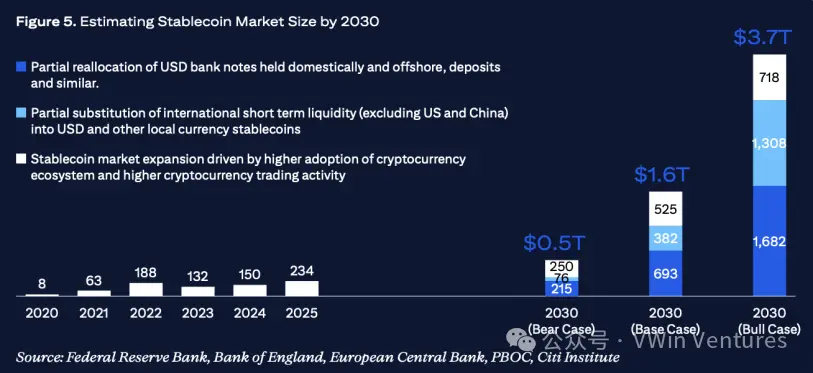

Competitive Landscape | Circle is Experiencing a Dual Race with On-Chain Native Scenarios and New Compliant Players
Circle is currently facing a dual race: on one hand, competing with on-chain native players like Tether in terms of liquidity coverage and usage flexibility, and on the other hand, competing with traditional financial giants like PayPal and JPMorgan for the rights to output stablecoin systems.
Circle's core competitive advantages:
Compliance first-mover advantage and legitimacy: Benefiting from compliance dividends, it is expected to serve as the "institutional stablecoin" supporting the on-chain dollar expansion strategy.
Open infrastructure and ecological network: USDC supports multiple chains, cross-chain protocols, and is deeply integrated with various exchanges and DeFi, collaborating with payment institutions to become the hub for cross-border payments and on-chain settlements.
Institutional trust and mainstream capital access: Asset security and transparency, regular audit reports, and currently the only product widely accepted as an "institutional-grade stablecoin."
Policy Implementation Raises Market Entry Barriers, Accelerating the Exit of Non-Compliant Players
In on-chain native usage scenarios, as global regulatory policies accelerate, the operational thresholds and costs for non-compliant issuers continue to rise. Circle's institutional compliance and auditability gradually transform into competitive dividends, enhancing its ecological embedding capabilities in scenarios like DeFi, wallets, and payment protocols.
Although Circle may struggle to surpass USDT in liquidity scale in the gray market, it is building irreplaceability from an institutional level and capturing USDT's compliant market share:
If U.S. and European regulations accelerate, USDT's market share in compliant scenarios is expected to drop from 25% to 10%, releasing about $21.6 billion in market space;
Circle is expected to capture about 60% of that, corresponding to an incremental $13 billion.
The likelihood of USDT becoming compliant is extremely low; it may continue to play a gray channel role, reaching an "informal agreement" with U.S. authorities to continue as a black tentacle for the global overflow of dollars.
Once market entry rules are clarified, banks and payment institutions will accelerate their entry, challenging USDC's compliance lead window.
Circle's compliance license barrier advantage is relatively limited, with several players accelerating their pursuit (e.g., PayPal).
The compliance transition from issuance to application still holds a lead advantage, as JPMorgan, Fidelity, and others are still in closed internal systems for their self-issued stablecoins.
The capital market's flow dividends will also be diluted with the wave of compliant crypto companies going public, posing a risk of early ecological dominance being diluted.
Can Circle Maintain Its Compliant Payment Scenarios?
The three original stablecoin giants each have their core advantages: USDT deeply entrenched in gray and black scenarios, with a multi-level acceptance distribution network; USDC has compliant banks and institutional channels; DAI is resistant to censorship and cannot be frozen.
Among them, USDC's compliance channel barrier is the most vulnerable to impact. Stablecoins issued by banks can deploy large-scale scenarios using traditional bank account systems and compliant channels, with Circle (e.g., USDC in specific scenarios being a derivative of USDT, where users genuinely use USDT in cross-border trade but the terminal on/off ramp switches from USDT to USDC through its compliant fiat channel).
Whether Circle's current cooperative channels can maintain strong binding relationships or if it will continue to burn cash for subsidies remains uncertain.
Competition Between Circle and Traditional Financial Institutions
In the short term, Circle has an overwhelming advantage in the "open global on-chain clearing network" due to its compliance first-mover advantage, on-chain native ecology, and open protocol capabilities.
In the medium to long term, if traditional financial players enter the market, their flow, user accounts, and deposit/withdrawal systems will pose the greatest threat, especially in retail payments and closed-system settlements (like proprietary wallets), potentially forming local substitutes.
The key to victory lies in: who can build the "compliant + composable + accessible" on-chain payment infrastructure faster and win institutional trust. Circle is ahead but must not be complacent.
The core lies in network effects, being widely accessed by both sides.
Bank-issued stablecoins may form liquidity recognition in B2B trade scenarios, but they lack "neutrality" in the on-chain ecosystem, making broad invocation difficult; accessing the neutral layer USDC is more feasible.
Circle's Long-Term Advantages:
1) Compliance + Open Ecology: Circle has become a leader in the compliant stablecoin field through early positioning and has broken through traditional financial giants' technical barriers with multi-chain and cross-chain payment platforms.
2) DeFi and RWA Integration: Circle's leading position in DeFi and RWA (asset tokenization) allows it to expand into high-growth areas not covered by traditional finance.
Traditional Financial Competitive Advantages:
1) Traditional Payment Networks and Merchant Base: Traditional financial giants can quickly promote stablecoin payments, especially in retail and B2B payment sectors, leveraging their vast payment infrastructure, merchant networks, and customer trust.
2) Fiat Deposit/Withdrawal and Bank Integration: Traditional financial stablecoins have a clear competitive edge in fiat exchange and integration with banking systems.
In RWA incremental scenarios, USDC must complete the upgrade from "licensed stablecoin" to "on-chain system currency."
BCG predicts that by 2030, the global RWA market will exceed $16 trillion. Stablecoins need "asset anchoring" to establish trust and expand scenarios, while RWA requires "on-chain funds" to obtain liquidity, together forming a value closed loop connecting the real and on-chain worlds.
Only having compliance and transparent reserves is no longer a competitive moat. For Circle to win the dominance in on-chain payments and transaction settlements, it must bind to the new asset class of RWA increments. Otherwise, its application layer will continue to be eroded, and its valuation ceiling will be suppressed.
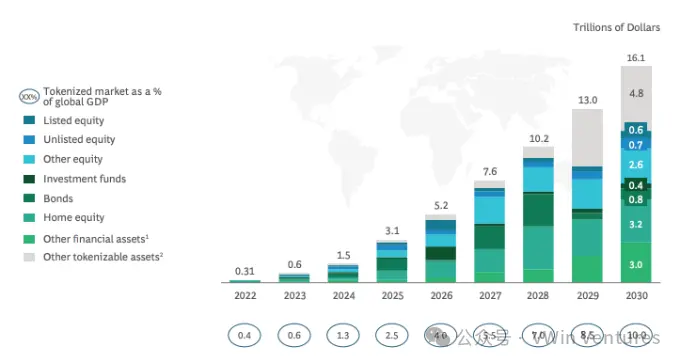

Business Model | Interest Rate Sensitivity and Channel Dependence, Circle Needs to Move Towards a Diversified Growth Curve
Current Circle Profit Structure is Singular and Highly Sensitive to Interest Rates
In 2024, revenue is expected to be about $1.7 billion, with a net profit of $160 million, 99% of which comes from reserve interest;
Assuming the Federal Reserve cuts interest rates by 1% annually, based on the AUM scale in 2024, revenue may decrease by about 20%, significantly impacting its profits;
High Channel Dependence, Coinbase Monopolizes Monetization Efficiency
Coinbase has exclusive rights to the USDC platform, and Circle heavily relies on Coinbase's promotional network;
After 2023, Coinbase became the sole issuance partner for USDC, with interest income generated on its platform going to Coinbase;
For non-Coinbase channels, Circle can only split profits 50/50, with about $1 billion in distribution expenses in 2024 almost entirely flowing to Coinbase, resulting in extremely low monetization efficiency for Circle's interest spread.
Core Transformation Direction: Composable Monetization of Stablecoin Infrastructure, Expanding Non-Interest Income
Relying solely on interest cannot sustain long-term valuation expectations; in the future, it needs to expand revenue scenarios through on-chain payment APIs, stablecoin cross-chain channels, wallet accounts, and other modules to increase To B profitability.
The CCTP (Cross-Chain Transfer Protocol) builds bridges for USDC across different chains, establishing a foundation for it to become the "on-chain payment layer."
Circle Mint and API products have already integrated with dozens of platforms; if an SDK-level calling closed loop can be formed, it will create a To B business closed loop.
On-chain clearing and settlement linked with RWA (such as collaborations with BlackRock and Securitize) are core scenarios for long-term valuation reconstruction.
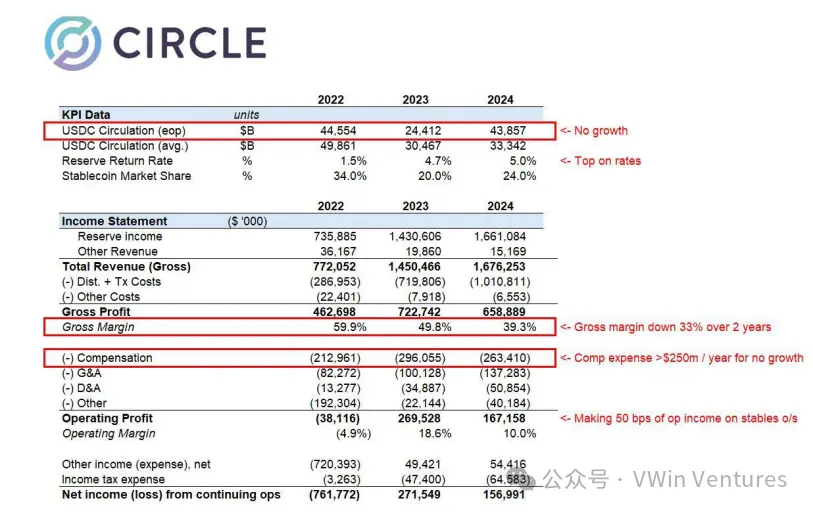
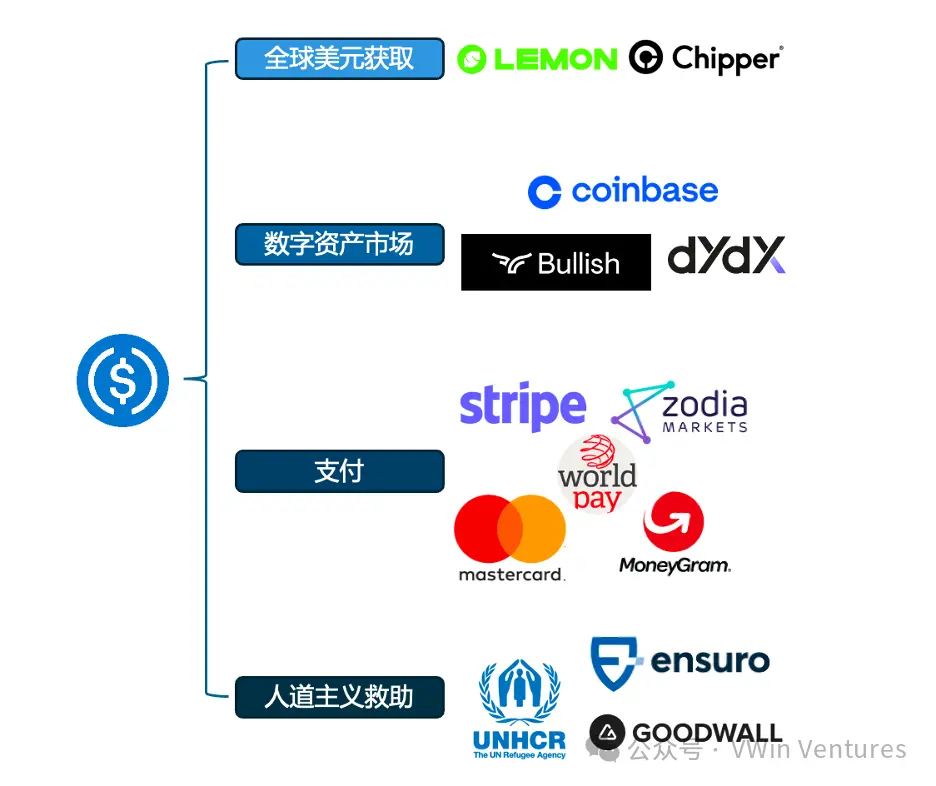

Financials and Valuation | The Hedge Structure of Black and White Dollars, Compliance Path Harder than Profitability
Financial Condition
Circle's IPO valuation is approximately $8.1 billion, with a PE ratio of about 50 times and a PS ratio of about 5 times (calculated based on 2024 financial data), indicating that the valuation has already achieved a relatively optimistic pricing based on profitability and cash flow structure.
AUM has rebounded to $60 billion, surpassing the approximately $40 billion level before the SVB crisis.
Current interest rates support profitability, with gross profit around $660 million and operating expenses relatively high, with employee costs at $260 million.
Comparison with Tether:
Tether's net profit exceeds $13 billion, 80 times that of Circle, with AUM only 2.5 times that of Circle.
Net profit margin is extremely high: fully direct sales, no channel costs; with only a little over a hundred employees, compliance costs are low, making it the company with the highest per capita net profit globally.
USDT's reserve asset structure is more aggressive (85% U.S. Treasuries, 5% gold, 7% BTC), with high risk also bringing high returns.
Differences in Profit Structure: Tether is a Money Printer, Circle is a Narrow Bank
- Tether has extremely low operating costs, does not bear compliance costs, does not pay channel profit sharing, and directly collects the interest spread; USDC is siphoned off at various stages.
Different Application Scenarios: Gray Market vs. Compliance
Tether has gone further in gray areas (bypassing KYC, engaging with sanctioned countries, etc.), achieving super strong profitability.
Circle is highly compliant, with financial transparency.
USDC must enforce blacklist, KYC, AML, and other systems.
Refuses to enter certain high-risk/non-compliant markets.
Profitability is suppressed by compliance costs (such as auditing and compliance expenditures).
Compliance Profit Margins Struggle to Compete with Non-Compliance
However, compliance is necessary to attract mainstream and institutional capital.
With the trend of mainstream market compliance, the survival space for non-compliance is shrinking; but at the same time, under the backdrop of global fragmentation, there is significant growth in genuine/regulatory external demand from the bottom up.
Compliance is essential to create capital market value and capital premiums.
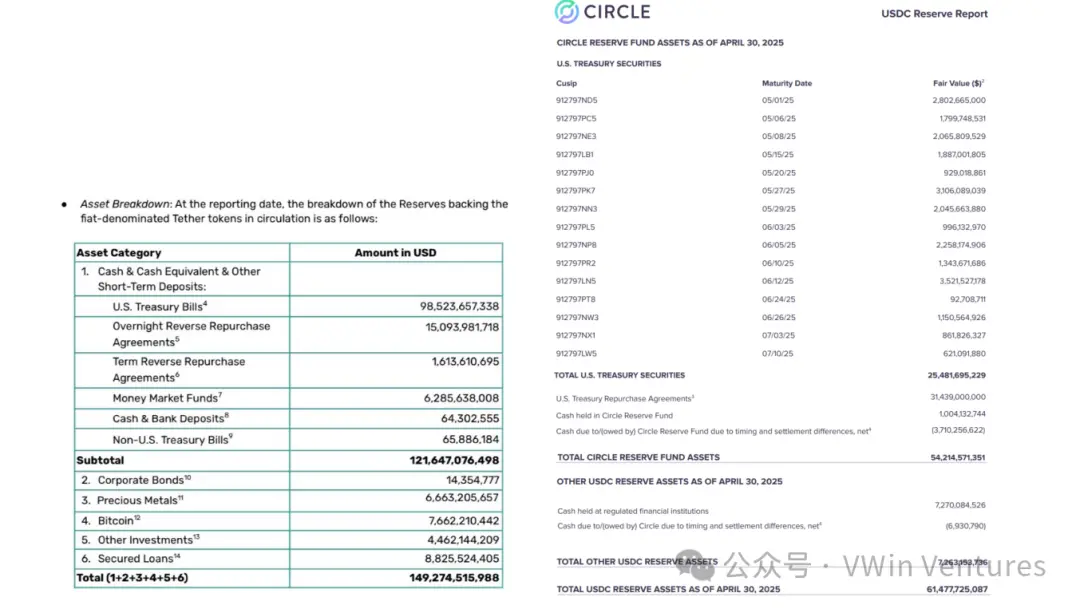

Investment Strategy | Short-Term Sentiment-Driven Valuation Has Achieved Relatively Optimistic Pricing, Presenting Opportunities for Sentiment Premium Trading; Long-Term Focus on Systematic Valuation Reconstruction
During the IPO phase, market sentiment is high and funds are crowded, with short-term market heat and recognition of the narrative of "compliant stablecoin leader" potentially bringing temporary trading opportunities.
However, attention should be paid to potential fluctuations in valuation regression, with major risks stemming from interest rate declines leading to interest spread compression, as well as the income sensitivity that may be exposed due to channel bargaining power not being fully established.
In the medium to long term, the key will be the expansion of new business, whether channel dependence decreases, and the ability to nest into the global payment network.
Investors are currently buying the pricing power of compliance licenses + future on-chain payment networks, not current profits.
Whether it will repeat Coinbase's "high-point listing" remains to be seen, with the focus on whether it can deliver progress in on-chain payment implementation and non-interest income increment data in the next two quarters.

Conclusion | The Stablecoin Bill Opens the Era of Compliance, Is the IPO Just the Prologue to a Vast Ocean of Stars?
The stablecoin market is entering an unprecedented explosive prelude: the rigid demand for payments and transactions provides continuous growth fuel, while the trends of compliance, institutionalization, and mainstream adoption are shaping it into the core infrastructure of on-chain finance.
Circle is at the core intersection of this trend.
Compliance legitimacy brings institutional positioning advantages, making it a representative option for "institutional stablecoins";
Open infrastructure capabilities endow it with a multi-chain, composable, and nestable technical architecture, allowing for neutral integration in scenarios such as payments, DeFi, cross-chain, and RWA;
Institutional-level trust structure enables it to become the preferred clearing and settlement asset for traditional institutions entering the crypto world.
However, at the same time, Circle still faces structural challenges such as sensitivity of revenue structure to interest rates and high channel dependence. Whether it can break free from cyclical constraints in new business expansion and build a second growth curve will determine its valuation reconstruction path.
The competition between USDC and USDT is no longer a simple "market cap battle," but a full-stack competition representing the black and white dollar systems, different clearing paths, and regulatory compatibility.
Circle's IPO is not an endpoint but the starting point for global stablecoins to officially enter the institutionalized track.
What the capital market is truly betting on is not today's revenue, but whether it can play a key protocol layer role in the global on-chain dollar consensus system. When USDC becomes the universal circulating base layer of "on-chain dollars," Circle's story will truly begin.
免责声明:本文章仅代表作者个人观点,不代表本平台的立场和观点。本文章仅供信息分享,不构成对任何人的任何投资建议。用户与作者之间的任何争议,与本平台无关。如网页中刊载的文章或图片涉及侵权,请提供相关的权利证明和身份证明发送邮件到support@aicoin.com,本平台相关工作人员将会进行核查。




